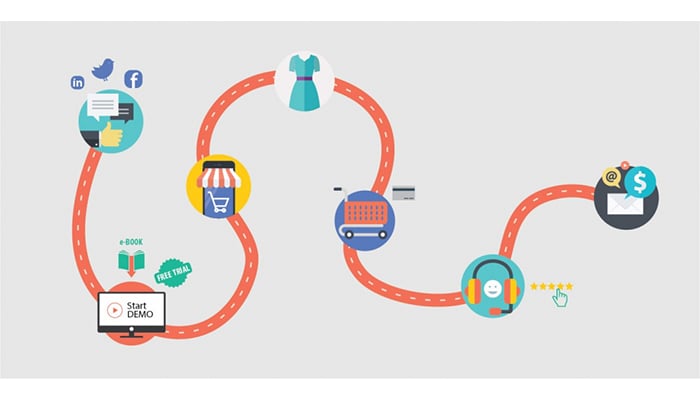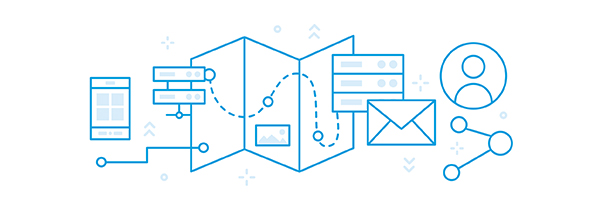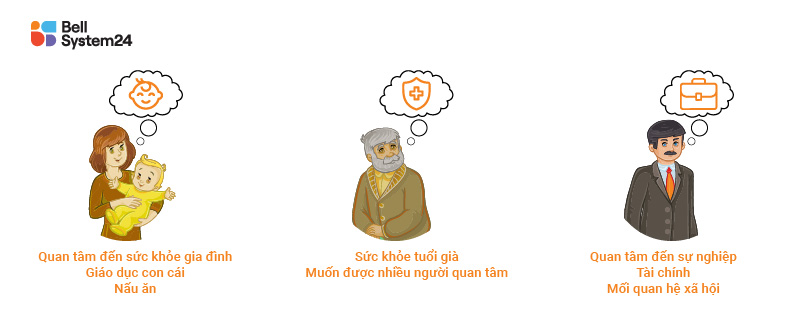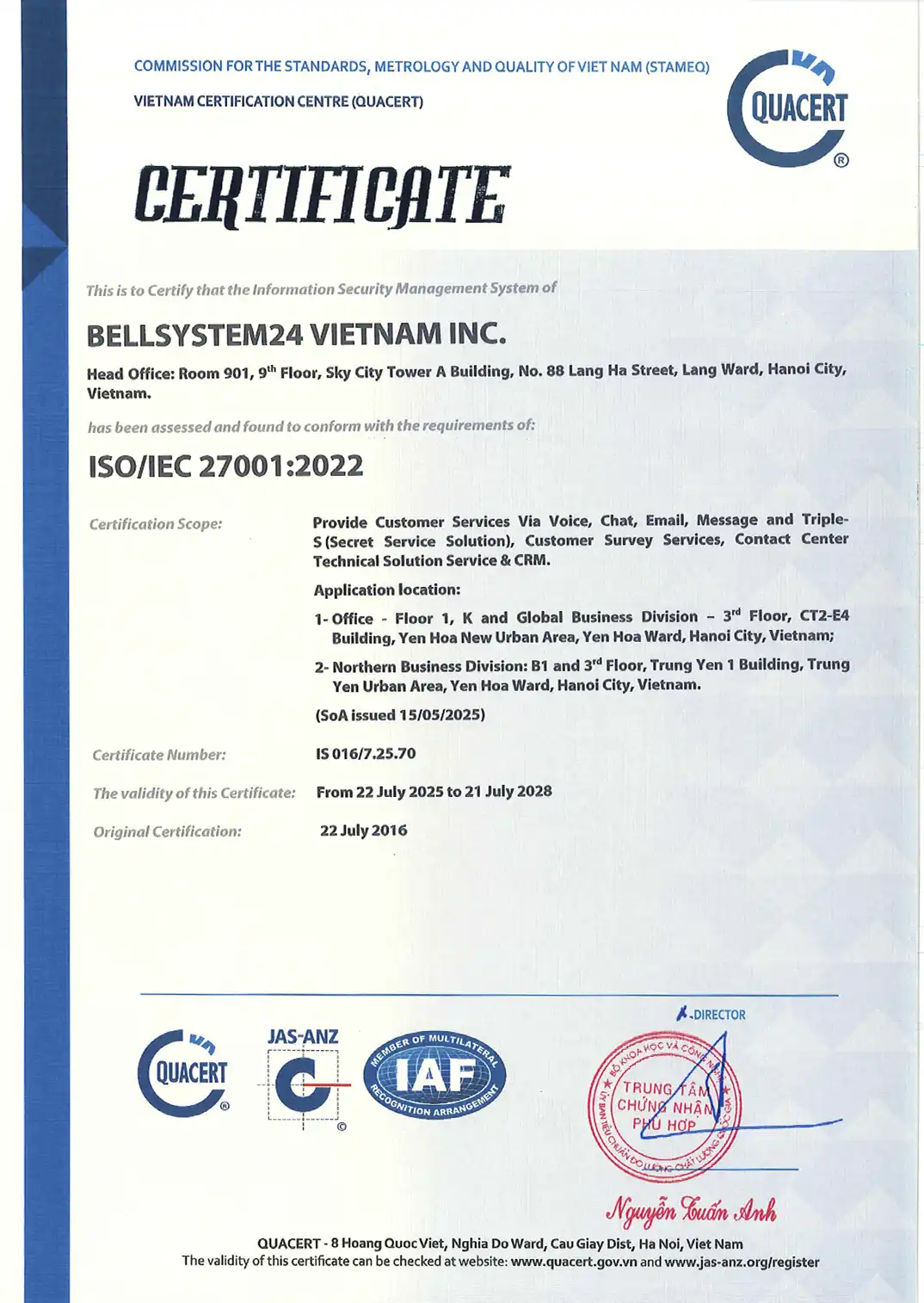You wonder why customers spend so much time clicking to add your product to their shopping cart? Or why customers have to go through dozens of steps to get from point A to point B, when you think it's incredibly simple? No matter how many questions you ask, the root cause stems from your lack of understanding of the customer journey.

What is a customer journey?
Customer Journey is the synthesis of the customer's interaction with the business to achieve specific goals.
Today's consumers interact with businesses in ways that are difficult to define. From generating demand and brand awareness through digital media or word of mouth, to making purchasing decisions and post-use evaluations. It is all a complex process involving many steps.
These are not things you can assume or predict based on subjective thinking. Subjective thinking can lead you to make mistakes in your decision-making. The best way to understand your customers is to survey them and create a customer journey map specifically for your business. In this article, Bellsystem24 Vietnam will explain everything you need to know about the customer journey and how to create a Customer Journey Map.
Customer journey map.
A customer journey map is a visual representation of the process customers go through to achieve their goals with your business. With a customer journey map, you can understand the motivations, drivers, needs, and pain points in the purchasing process of theirs. The best way is to turn what you envision into a diagram filled with useful information!

Customer journey map template for the E-Commerce industry
This way, you can understand the structure of touchpoints to create an effective business process that suits your customers. The customer journey map outlines your current process. It shows the customer's journey from the first touchpoint to the last to see if they achieve their goals. If not, you can determine what to do to improve.
For this reason, managers often use various methods to illustrate the customer journey, from simple notes to Excel files or infographics. However, the most important thing is that the map must be easy to understand and effective to use.
Why is the customer journey map important?
You might tell yourself: "This doesn't seem necessary for me. We understand our customers' needs and pain points." This may be true at a basic level.
However, if you break down the customer journey into stages, you will uncover a host of hidden issues that you were previously unaware of. This helps you identify ideas, organize each step with clear objectives, and restructure touchpoints to maximize operational efficiency (helping customers achieve more of their goals).
1. Understand customer insights.
If you don't understand the customer journey correctly, you probably won't understand customer demographics, psychology, and behavior correctly either. This is a waste of the time and money you invest in activities. customer care of your own because you are targeting too broad an audience. Researching customer needs and pain points helps you paint a complete picture of their shopping journey, understand who they are and what they want, and thereby focus your resources on targeting more accurately.
2. You can implement Inbound Marketing.
Instead of implementing outbound marketing activities by spending tons of money on advertising and annoying viewers. Now, the customer journey map helps you gain a solid understanding of customer insights, know what is useful to them and what excites them, thereby providing a solid foundation for implementing effective Inbound Marketing activities that target the right audience at a much lower cost than Outbound marketing.
3. Motivate all employees to focus on a specific group of customers.
As your company grows, it becomes difficult to coordinate all departments to focus on specific customers. Different departments will view issues from different perspectives and handle tasks in ways that may not align with what customers truly want.
How to create a customer journey map.

1. Set clear goals.
Before you dive into creating a map, ask yourself right from the start: Why do you need a customer journey map? What is the goal of this map? Who does it refer to? What is the map based on?
Based on this, you can create a Buyer ProfileThis is a fictional customer with all the demographic and psychological characteristics representative of your actual customers.
2. Define action goals from Personas.
Next, conduct Buyer Persona action research. A great and easy way to obtain accurate information is to conduct user testing surveys. Reach out and survey current and potential customers using a pre-built questionnaire.
You can ask questions such as:
- How did you learn about my company?
- What attracts you to my website?
- What specific goals do you want to achieve? Or what issues do you need to resolve when you come to our company?
- How much time do you usually spend on our website?
- Have you ever purchased our products? What factors influenced your decision to buy?
- Have you ever decided to buy something on our website but then changed your mind? If so, what made you change your mind from buying to not buying?
- On a scale of 1 to 10, how would you rate the navigation/usability of our website?
- Have you ever requested support from customer service? If so, please rate the quality of customer service you received on a scale of 1 to 10.
- Is there any way we can help make your purchasing process easier?
You can refer to:
- Service Quality Survey Form.
- Customer Care Quality Assessment Survey Form
3. Highlight your target customers.
Select one Buyer Persona that you believe can represent your actual customers, rather than choosing multiple Buyer Personas. You will need to narrow your analysis focus. Remember, the customer journey map only tracks the experience of one specific customer. If you try to group too many Personas into the same journey, your map may not accurately reflect reality. customer experience.
Don't worry about the characteristics of other Buyer Personas that you've overlooked; you can always go back and create a new journey map for this customer segment.
4. List the points of contact.
Touchpoints are all the places where customers can interact with your business. Based on your business operations, you should list all the touchpoints that current and potential customers are currently using.
This is an important step in creating a customer journey map, as it provides you with deep insights into the actions your customers are taking. If they use fewer touchpoints, there are two main scenarios: They refuse to make a purchase and do not interact with your business early on, or your purchasing process is happening faster than you think.
Customer contact channels typically include:
- Physical store.
- Social media.
- E-commerce store.
- Advertisement.
- Email Marketing.
- Third-party business review page.
- Customer service hotline
- ……
From the identified touchpoints, determine the following three factors at each touchpoint: Customer actions, Emotions & motivations, Obstacles, and Reasons for customer abandonment.
When using the Omnichannel Contact Center Telehub solution, you can easily view the customer journey across channels on a visual and detailed reporting interface.
Reference video
5. Identify the elements you want to display on the map.
There are four types of customer journey maps, each with its own benefits. You can choose according to your business's goals and needs.
- Reflecting reality: This is the most widely used type. You visualize the actions, thoughts, and emotions of customers currently experiencing your business. Suitable when you need to change business processes to improve the customer journey.
- Showcasing customers' lifestyles: Visualize the actions, thoughts, and emotions of customers currently experiencing all the activities they engage in daily. This type of map provides broader information about customers' lives and the pain points in their lives that can potentially impact their experience at your business. Use elements of customers' lives to stimulate their needs and address their pain points even before they become aware of them.
- Predicting the future: Envision the experiences customers will have when interacting with your business in the future. Use this to plan your business vision and set clear business goals.
- Detailed implementation: Simplify the above map types by evaluating current customer experiences and identifying the responsibilities of the elements that provide those experiences, including people, business policies, technology, and processes. Used to determine the root causes of the current customer journey and the steps needed to improve it.
See also: Standard customer care process diagram.
6. Experience the customer journey yourself.
Creating a customer journey map cannot be completed unless you put yourself in the customer's shoes and experience it. Once you have a rough customer journey map, experience it yourself exactly as you noted in the map. This test will show you where customer needs are not being met and reveal gaps.
The entire map you have sketched will only be a hypothesis if this step is missing.
7. Implement the changes.
After experiencing the customer journey yourself, change it if you feel that the map is not accurate. Once you are sure that the map accurately depicts the customer journey, analyze it and make changes to improve it. These changes include: operational processes, personnel, operating policies, costs, technology, and the UX/UI of touchpoints.
Mapping the customer journey must be done regularly on a monthly/quarterly/annual basis to facilitate appropriate changes and create advantages. This is because customer needs, the market, competitors, and technology are constantly changing.
See more: Customer journey map template and ready-made template.







